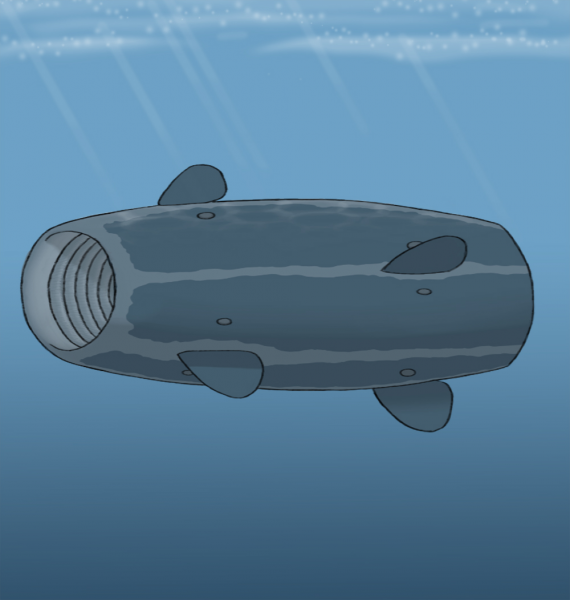BY LETTER
Leviathan
 Image from Andrew P. |
Very large sea-going animal native to New Poseidon.
Approximately 100 meters in length and 20 meters diameter, the leviathan fills the same ecological niche on its world as whales do on Earth. The body consists of a huge tube of flesh open at both ends. Muscle contractions force water through the creature and propel it through the water. Thousands of small tendrils on the inner wall of the body strain the water for micro-organisms for food. Half a dozen relatively small, paddle-like fins circle the outside of the body in two bands of three. Each band is offset from the other. These fins are used to help the creature steer. A dozen eyes are dotted around the body, but the creature relies primarily on sonar to sense the world around it.
Leviathans travel in small family groups of 3-7 animals. When a group becomes too large, some members will split off and form a new grouping or two large groups may mix and then split into 2-3 new families with members of the two starter groups mixed together.
Leviathans are often accompanied by the symbiotic parasite known as Macroamoeboids. These large, single-celled organisms are presapient, and can help the Leviathans to find swarms of aquatic food organisms, and to find other members of their own species when isolated from one another.
Related Articles
Appears in Topics
Development Notes
Text by Todd Drashner
Initially published on 11 December 2001.
Initially published on 11 December 2001.






